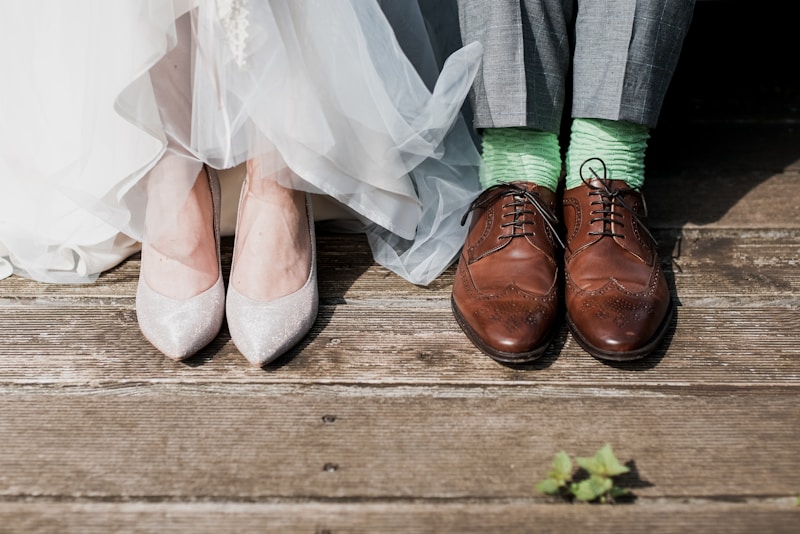Cohesive Color Schemes for DIY Weddings: A Comprehensive Guide
Planning a DIY wedding can be both exciting and overwhelming. One of the most crucial aspects that can make or break your wedding's aesthetic is the color scheme. A cohesive color scheme ties together all elements of your wedding, from decorations and attire to floral arrangements and table settings. In this article, we will explore various cohesive color schemes for DIY weddings, discuss color theory, share tips on how to choose the right colors, and provide inspiration to help you create a stunning visual experience for your special day.
Understanding Color Theory
Before diving into specific color schemes, it is essential to understand some basic principles of color theory. Colors can evoke different emotions, set the tone, and create a beautiful flow throughout your event. Here are the primary categories of colors:
- Primary Colors: Red, blue, and yellow. These form the foundation for all other colors.
- Secondary Colors: Orange, green, and purple. These are made by mixing primary colors.
- Tertiary Colors: These are created by mixing a primary color with a secondary color.
When selecting a color scheme for your wedding, you can draw inspiration from various sources, including nature, cultural backgrounds, and personal preferences.
Popular Cohesive Color Schemes for DIY Weddings
Here, we will discuss some popular cohesive color schemes that work beautifully for DIY weddings. Each color scheme can be adapted to suit different themes, seasons, and personal styles.
| Color Scheme | Description | Best For |
| Blush and Gold | A romantic palette of soft pinks paired with elegant gold accents. | Romantic and elegant themes. |
| Rustic Earth Tones | warm browns, greens, and oranges that give a natural, earthy vibe. | Outdoor and Rustic weddings. |
| Beachy Blues | Shades of blue accented with soft pastels, perfect for a coastal setting. | Beach or destination weddings. |
| Bold Jewel Tones | Rich colors such as emerald, sapphire, and amethyst for a dramatic impact. | Formal and elegant events. |
| minimalist Neutrals | Chic whites, greys, and blacks for a clean and modern appearance. | Modern and minimalistic themes. |
Choosing Your Color Scheme
Selecting a cohesive color scheme for your DIY wedding can be an enjoyable process. Here are some tips to guide you in choosing the right colors:
1. Consider the Season
The season in which you are getting married can significantly influence your color choices. For instance:
- Spring: Pastels like blush, mint green, and lavender.
- Summer: Bright colors like vibrant yellows, coral, and ocean blues.
- Autumn: Warm tones like red, burnt orange, and deep golds.
- Winter: Cool shades like navy, icy blues, and silvers.
2. Reflect Your Personality
Your wedding is a reflection of your style and personality. Choose colors that resonate with you and your partner. Whether you prefer soft and romantic shades or bold and vibrant hues, select colors that bring you joy.
3. Use the Color Wheel
The color wheel is a helpful tool in selecting complementary colors. Colors that sit opposite each other on the wheel, like blue and orange, create a vibrant contrast. Analogous colors, which are next to each other on the wheel, like blue and green, provide a harmonious look.
4. Create a Mood Board
A mood board is an excellent way to visualize your color scheme. Gather samples of fabrics, flowers, and any decorative elements you plan to use. This can help you see how the colors work together in a tangible way.
Incorporating the Color Scheme into Your Wedding
Once you have your color scheme sorted out, it's time to incorporate it into various aspects of your wedding. Here are some key areas to focus on:
1. Invitations and Stationery
Start by using your color palette in your wedding invitations and other stationery. This sets the tone for your wedding and gives your guests a preview of what to expect.
2. Attire
Consider incorporating your color scheme into your wedding attire. This may include the wedding party's dresses, ties, and accessories. Don't forget about the bridal bouquet; it can be a fantastic way to introduce your color palette.
3. Decorations
From table centerpieces to chair covers, use your chosen colors strategically throughout the décor. Consider different shades of a color to create depth and dimension.
4. Flowers
Flowers are one of the easiest ways to bring your color scheme to life. Choose blooms that fit within your palette and consider seasonal availability for the freshest options.
5. Cake and Catering
Your cake can also reflect your color scheme. Use colored frosting, edible flowers, or even colored cake layers. Similarly, consider colorful foods and beverages that align with your theme.

Conclusion
In conclusion, a cohesive color scheme is vital for creating a beautiful and memorable DIY wedding. By understanding color theory and considering various aspects such as seasonality and personal style, you can select a color palette that reflects your unique love story. Remember to integrate your scheme into invitations, attire, decorations, and beyond to create a harmonious atmosphere for you and your guests. As you embark on this exciting journey, take your time to explore different options and enjoy the creative process. Happy planning!
When finalizing your colors, keep in mind that less is often more. A three-color palette can be vibrant yet sophisticated, while a more extensive palette may feel chaotic. Ultimately, choose what feels right for you and your partner’s special day.